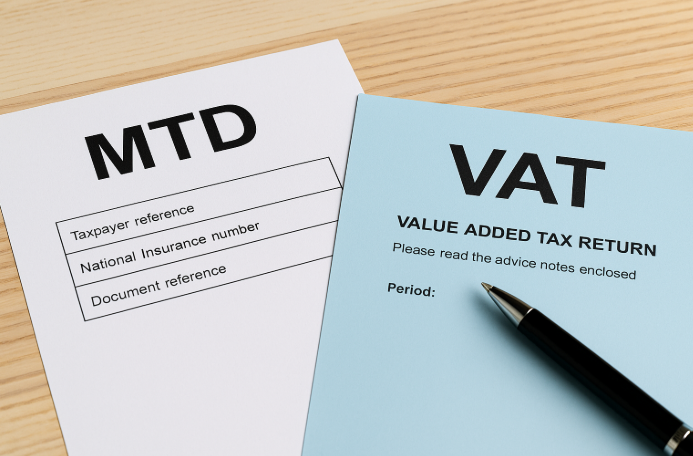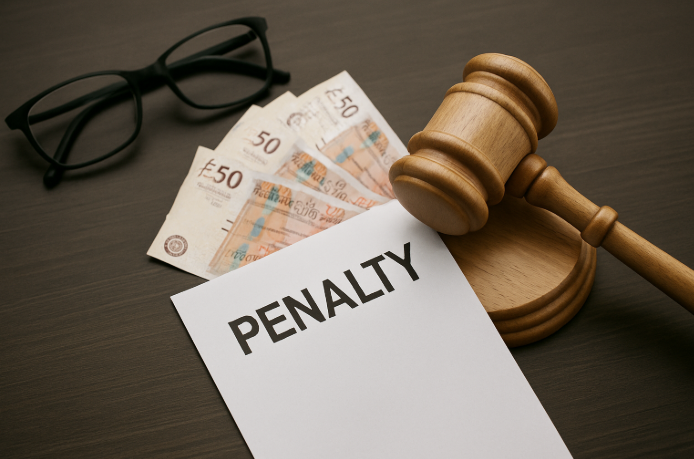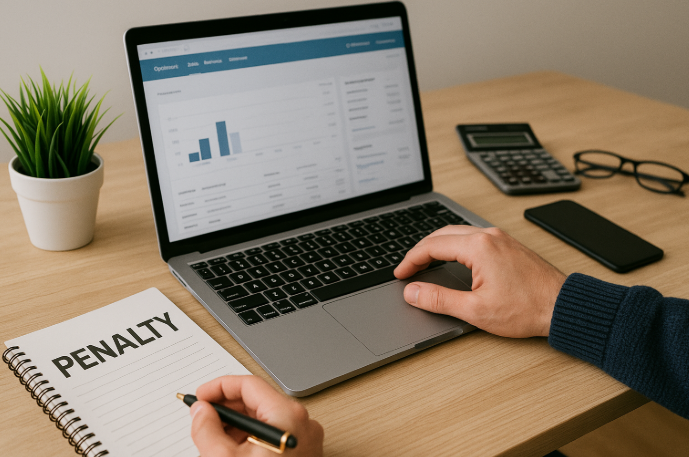Making Tax Digital for Income Tax Self Assessment (MTD ITSA) begins in April 2026. It requires sole traders and landlords with qualifying income over set thresholds to maintain digital records and submit tax updates quarterly. This full guide answers What is MTD for Income Tax?, Who needs to comply?, and How to prepare — ensuring you grasp the 2026 requirements and stay HMRC‑compliant.
What is MTD for Income Tax and How Will it Work from 2026?
Making Tax Digital for Income Tax is a new requirement from HMRC that will affect millions of self-employed individuals and landlords starting in April 2026. The goal is to modernise the tax system by replacing traditional paper-based methods with digital processes. Instead of one annual Self Assessment, taxpayers will need to keep digital records and send updates more frequently.
What does MTD ITSA stand for?
MTD ITSA stands for Making Tax Digital for Income Tax Self Assessment. It forms part of HMRC’s digital reform to simplify tax compliance for individuals earning from business or property.
Key facts:
-
It targets self-employed businesses and landlords with income over £50,000 (from April 2026).
-
From April 2027, it will also apply to those earning between £30,000 and £50,000.
-
It replaces traditional annual Self Assessment with a digital-first process.
How will it change your filing process?
The filing process under MTD ITSA is significantly different from the current Self Assessment routine:
📌 Mandatory Digital Record-Keeping
-
You’ll need to use HMRC-approved software to digitally record your business income and expenses on a real-time basis.
-
Spreadsheets can still be used, but only when paired with bridging software.
📌 Quarterly Submissions to HMRC
-
Every three months, you must submit a summary of your income and allowable expenses.
-
These updates don’t calculate your final tax bill but keep HMRC informed throughout the year.
📌 End-of-Year Final Declaration
-
At the end of the tax year, you’ll submit a Final Declaration instead of a traditional tax return.
-
This will confirm your total income and allow you to claim reliefs, adjustments, and submit final figures.
-
It replaces the current SA100 form and is submitted via software.
📌 Increased Transparency & Accuracy
-
-
MTD aims to reduce errors and improve compliance by using technology.
-
You’ll be less likely to miss deductible expenses or deadlines due to ongoing tracking.
-
What Information is Sent to HMRC for MTD?
Under Making Tax Digital, taxpayers must send five types of submissions annually to HMRC via MTD-compliant software:
1. Quarterly updates (x4 per tax year)
-
Income totals
-
Allowable expenses
-
Adjustments (if applicable)
-
Confirmation of digital record-keeping
These updates give HMRC an in-year overview of tax liability but do not replace the annual tax return.
2. End of Period Statement (EOPS)
-
Finalises income and claims all allowable reliefs.
-
Submitted once per income source (e.g., trading, property).
3. Final Declaration (Crystallisation)
-
Confirms all income for the tax year.
-
Replaces the traditional Self Assessment tax return.
When is the Deadline for HMRC MTD Income Tax Changes 2026?

Making Tax Digital (MTD) for Income Tax Self Assessment is being rolled out in phases, giving individuals time to prepare. The deadlines are based on your total gross income from self-employment and property.
Key roll-out dates to remember
-
-
6 April 2026:
MTD becomes mandatory for individuals with gross income over £50,000 from self-employment and/or property.
– Must start keeping digital records from this date
– First quarterly submission due by 5 August 2026 -
6 April 2027:
The income threshold reduces to £30,000, bringing more landlords and sole traders into scope. -
6 April 2028 (expected):
A further planned reduction in the threshold to £20,000, subject to future government review.
-
How HMRC determines your start date
-
Based on qualifying income reported for the tax year ending 5 April 2025.
-
If your gross income from trading and/or property exceeded thresholds, HMRC will notify you by letter.
-
You may volunteer for early adoption before the mandatory date.
What Do Income Tax Partnerships Need to Know About MTD?
Making Tax Digital for Income Tax Self Assessment (MTD ITSA) will eventually extend to unincorporated partnerships, but implementation is still in development. While the focus remains on individuals for the 2026 rollout, partnerships are advised to prepare for future inclusion.
When will partnerships be affected?
-
HMRC has not yet set a confirmed date for mandatory MTD compliance for partnerships.
-
The plan is to phase in unincorporated partnerships after individual self-employed businesses and landlords are fully onboard.
-
A voluntary pilot scheme may become available for partnerships in the future, but participation is currently limited.
How Partnerships Can Start Preparing
-
Digital recordkeeping: Begin using software to track income, expenses, and profit shares, even if not yet mandatory.
-
Software readiness: Choose accounting platforms that are MTD-compatible to future-proof operations.
-
Stay informed: Sign up for HMRC updates or work closely with an accountant who can monitor regulatory changes.
-
Internal systems: Review how your partnership allocates income and keeps financial records to ensure it can transition smoothly once MTD applies.
Current limitations and advice
-
Partnerships cannot register for MTD for Income Tax at this time, even voluntarily.
-
Each partner must continue to report their share of profits and income through the traditional Self Assessment process.
-
HMRC software and API tools for partnership MTD submissions are still in development.
What is Qualifying Income for MTD?
Qualifying income determines whether you must comply with MTD ITSA rules.
How is qualifying income calculated?
-
It is the total gross income from:
-
Self-employment (sole trader businesses)
-
Property (UK and overseas rental income)
-
-
HMRC uses income from the previous tax year to assess your status.
Thresholds
| Tax Year | Qualifying Income Threshold |
|---|---|
| 2026/27 | £50,000+ |
| 2027/28 | £30,000+ |
| 2028/29 | £20,000+ (expected) |
Is MTD for VAT Compulsory and How Does It Differ?

MTD for VAT: What you need to know
MTD for VAT has been mandatory since April 2019 for VAT-registered businesses with a taxable turnover above the £85,000 threshold.
-
-
From April 2022, the requirement extended to all VAT-registered businesses, regardless of turnover — including voluntary registrations.
-
Businesses must now:
-
Keep digital VAT records using MTD-compatible software.
-
Submit VAT returns digitally through that software or via approved bridging tools.
-
-
Difference between MTD VAT and MTD ITSA
| Feature | MTD for VAT | MTD for Income Tax (ITSA) |
|---|---|---|
| Start Date | April 2019 (fully by April 2022) | April 2026 (from £50k income) |
| Who is affected? | VAT-registered businesses (all) | Self-employed individuals & landlords |
| Frequency of submission | Quarterly VAT returns | Quarterly income updates + Final Declaration |
| Recordkeeping method | Digital records of VAT transactions | Digital records of income & expenses |
| Software needed? | Yes – MTD-compatible | Yes – MTD-compatible or bridging tools |
| Penalty regime | Applies for late filing/payment | Will apply under new points-based system |
What is the Difference Between RTO and MTD?
Defining RTO
RTO most commonly stands for “Return to Owner” in logistics or retail settings.
-
It refers to items being sent back to the original sender, such as a supplier or manufacturer.
-
It is not a recognized tax or compliance term under HMRC’s Making Tax Digital program.
Why MTD is not RTO
Making Tax Digital (MTD) is an HMRC initiative that involves digitally submitting tax information through approved software.
-
-
MTD is based on:
-
Real-time income and expense reporting
-
Quarterly updates and final declarations
-
Digital recordkeeping requirements
-
-
RTO, in any of its common meanings, has no overlap with tax systems or MTD processes.
What Are the Advantages and Disadvantages of MTD for Income Tax?
Advantages of MTD
-
Accuracy – Automatic calculations reduce errors.
-
Financial insight – Quarterly reporting improves cashflow planning.
-
Time-saving – Digital systems reduce manual record-keeping.
-
Tax transparency – Early error detection and prompt corrections.
Disadvantages of MTD
-
Software costs – Subscription fees for MTD‑compliant tools.
-
Digital skills required – Stronger technical capacity needed.
-
Administrative burden – Ongoing quarterly updates vs yearly returns.
-
Security concerns – Heightened need for data protection.
What Penalties Will Apply Under the HMRC MTD 2026 System?

Late submission and payment penalties
-
Points-based system – Each missed quarterly update adds one penalty point; enough points trigger a financial penalty.
-
Late payment charges (from April 2025) see higher rates under MTD:
-
15 days late: +3% of outstanding tax
-
30 days: +3%
-
Over 31 days: 10% per year.
-
Penalty summary
| Late by (days) | Penalty/Charge |
|---|---|
| 0–15 | 0% (grace period) |
| 16–30 | 3% of unpaid tax |
| 31+ | 10% annually |
Are There Exemptions from MTD for Income Tax?
While Making Tax Digital for Income Tax Self Assessment (MTD ITSA) will become mandatory for many from April 2026, HMRC recognises that not everyone can reasonably comply with digital requirements. As such, several categories of individuals may be fully or temporarily exempt.
Who qualifies for exemptions?
-
Age, disability, or religious grounds (e.g., ministers of religion).
-
Those claiming Blind Person’s Allowance or Married Couples’ Allowance are Lloyd’s Underwriters.
-
Non-UK residents using residence/remittance basis until at least April 2027.
How to apply for MTD exemption
Automatic Exemptions
-
In some cases (e.g., advanced age or certain allowances), HMRC may automatically grant tax exemption without the need for an application.
-
These will be visible in your online tax account or through written confirmation.
Manual Exemption Requests
If you believe you qualify:
-
-
Apply online through HMRC’s digital exemption request portal.
-
Alternatively, send a written request by post with evidence (e.g., medical notes, proof of no internet access).
-
How Can You Prepare for the 2026 MTD Changes?

Step-by-step MTD readiness checklist
-
Calculate your qualifying income (combined trading and property receipts).
-
Select compliant software (e.g., Xero, FreeAgent, QuickBooks, TaxCalc).
-
Register for MTD ITSA via HMRC’s portal—optional early sign-up is possible.
-
To evaluate systems early, begin digital record-keeping right away.
-
Submit quarterly updates and final return through your software.
Benefits of joining MTD pilot
-
Gain hands-on experience with HMRC’s system.
-
Access to dedicated HMRC support staff during testing phase.
-
Build confidence ahead of mandatory adoption.
Yes, further changes are expected:
Threshold reduction to £20,000
-
From April 2028, MTD ITSA is likely to apply to those earning £20,000+ in gross income (trading + property).
-
This will extend compliance to a larger pool of taxpayers, including smaller landlords and part-time self-employed individuals.
Potential future phases
-
Extension to partnerships and corporation tax remains under review.
-
HMRC continues to refine the MTD rollout based on pilot feedback and taxpayer readiness.
Conclusion
FAQs – MTD Income Tax 2026
What is MTD for Income Tax and who must comply in April 2026?
MTD ITSA mandates digital records and quarterly reporting for self-employed individuals and landlords with over £50,000 combined gross income from 6 April 2026 onwards.
Do partnerships have to join by 2026?
Not yet—they’ll be included in a future phase with no specific start date. Individual partners with other qualifying income must still comply.
What if I earn less than £50,000?
Until the thresholds drop (£20k in 2028, £30k in 2027), you are still exempt.
Can I apply for an exemption from MTD?
Yes—if you’re digitally excluded, religiously opposed, disabled, age-affected, or part of exempt groups like ministers or those claiming Blind Person’s Allowance.
What software must I use?
Use MTD‑compliant software like Xero, FreeAgent, QuickBooks, TaxCalc, or bridging tools connecting spreadsheets to HMRC.
How does MTD ITSA compare to MTD VAT?
MTD VAT focuses on VAT-only records and returns; MTD ITSA covers broader income & expenses and requires quarterly and annual submissions.

I’m Joe Chris, co-author at ukbusinessmag.co.uk and a long-time enthusiast of all things business and finance. My background is in digital marketing and e-commerce, and I love diving into trends that impact the UK business landscape. Through my writing, I aim to make useful, real-world advice accessible to business owners.



